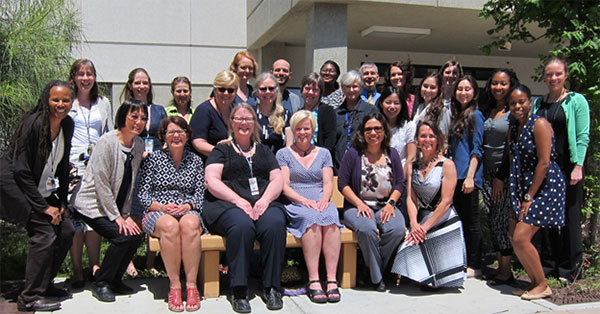 |
How Stranger Harassment of Women Veterans Affects HealthcareHSR&D’s monthly publication Veterans’ Perspectives highlights research conducted by HSR&D and/or QUERI investigators, showcasing the importance of research for Veterans – and the importance of Veterans for research. In the April 2019 Issue: |
Women Veterans Healthcare CREATEHSR&D’s Women Veterans Healthcare Collaborative Research to Enhance and Advance Transformation and Excellence (CREATE) initiative conducted research to examine the essential factors that facilitate (or slow) the pace, effectiveness, and outcomes of the delivery of comprehensive care for women Veterans within the VA healthcare system. This CREATE initiative worked closely with several operational partners, including the Office of Women’s Health Services and the Office of Mental Health Services.IntroductionStranger harassment or street harassment, also referred to as sexual harassment, includes a range of verbal and non-verbal behaviors such as comments, catcalls, staring, as well as noises and gestures. Approximately two-thirds of women in recent U.S. national surveys reported experiencing sexual harassment in public spaces at some point in their lives; however, only five percent of women respondents in a recent national survey reported that they were sexually harassed in a healthcare setting. Given that sexual harassment is common in the U.S. military, investigators with HSR&D’s Women Veterans Healthcare CREATE initiative sought to examine whether harassment also was prevalent in the settings where many Veterans, including women, receive their healthcare. Between 2005 and 2015, the number of women Veterans using VA healthcare increased 46%, from 237,952 to 455,875. Nonetheless, women still only comprise 8% of VA patients, and they are still vastly outnumbered by men in almost all VA healthcare environments, including waiting rooms, hallways, and treatment centers. This has posed challenges for the healthcare system, especially since many women Veteran using VA have complex medical and mental health conditions. At least one-quarter have been exposed to trauma, including military sexual trauma (MST), which includes both sexual harassment and sexual assault. 
The Women Veterans Healthcare CREATE Team and members of its Executive Steering Committee. Inviting Women Veterans to ParticipateThe key to any study examining Veterans’ perspectives is getting Veterans to participate. The key to any study examining Veterans’ perspectives is getting Veterans to participate. In this study, investigators sent more than 3,000 eligible women Veterans a pre-notification packet that included an introductory letter, VA leadership endorsements, a small refrigerator magnet depicting women Veterans, and a study brochure that provided the required elements of informed consent. Study interviewers then made up to 12 attempts to contact potential respondents at varying days and times, using a computer-assisted telephone interviewing system. After excluding non-responders and partial interviews, investigators conducted full interviews with 1,387 women Veterans from January – March 2015. These women had three or more primary care or women’s health encounters at one of 12 diverse urban and rural VA medical centers (VAMCs) across nine states in the prior 12 months. In addition to questions about stranger harassment, investigators also assessed patient socio-demographics, health status, trauma exposure, military sexual trauma (MST), and mental health (anxiety disorder, PTSD, and depression). Women Reporting Stranger Harassment on VA Grounds More Likely to Delay or Miss HealthcareOne in four women Veterans (25%) reported inappropriate and/or unwanted comments or behavior by male Veterans on VA grounds. Findings from this study show:
Women Veterans Respond to Questions about Stranger HarassmentWoman Veteran: “You get the feeling that you shouldn’t be there [VAMC], not as much as men, and that your service didn’t matter.” Of those women reporting an incident on VA grounds, 61% reported harassment, 16% reported that their status as a Veteran was questioned, 7% reported harassment in addition to questions about Veteran status, and 5% reported threatening/criminal behavior. Some of the specific comments offered by women Veterans include:
How VA is Working to Fix the ProblemBecause this study was part of the Women Veterans’ Healthcare CREATE Initiative, findings were presented to VA healthcare leaders as soon as they were discovered. In response to these findings, VA Women’s Health Services enhanced this work by:
This work is ongoing, as is VA Women’s Health Services’ campaign to change the environment and culture of VA to be more inclusive, welcoming, and respectful of women Veterans. For more information about this study, please contact Ruth Klap, PhD, at Ruth.Klap@va.gov . For more information about the Women Veterans’ Healthcare CREATE, please contact Elizabeth Yano, PhD, MSPH at elizabeth.yano@va.gov Klap R, Darling J, Hamilton A, Rose D, Dyer K, Canelo I, Haskell S, and Yano E. Prevalence of Stranger Harassment of Women Veterans at Veterans Affairs Medical Centers and Impacts on Delayed and Missed Care. Women’s Health Issues. March-April 2019;29(2):107-115. |